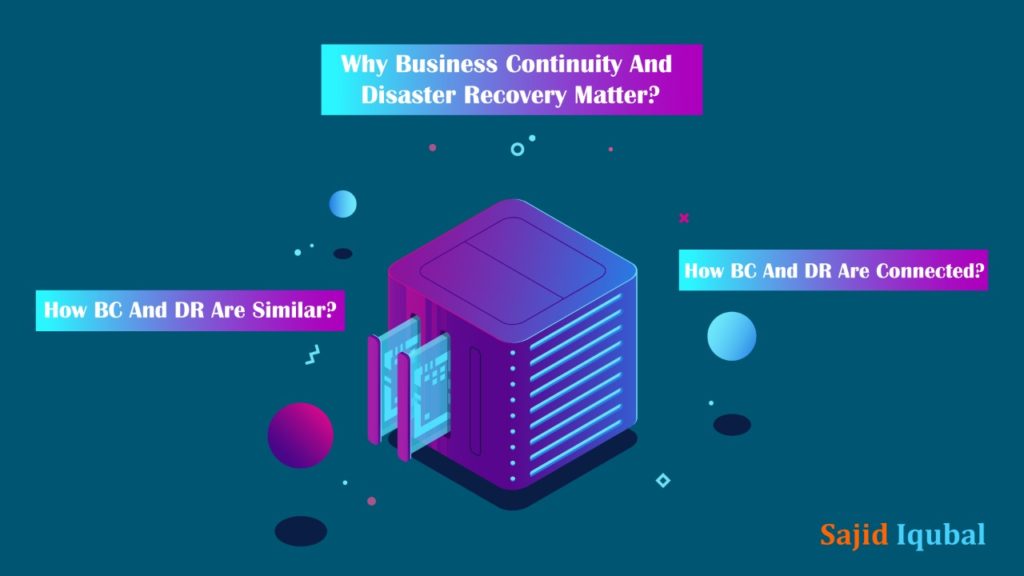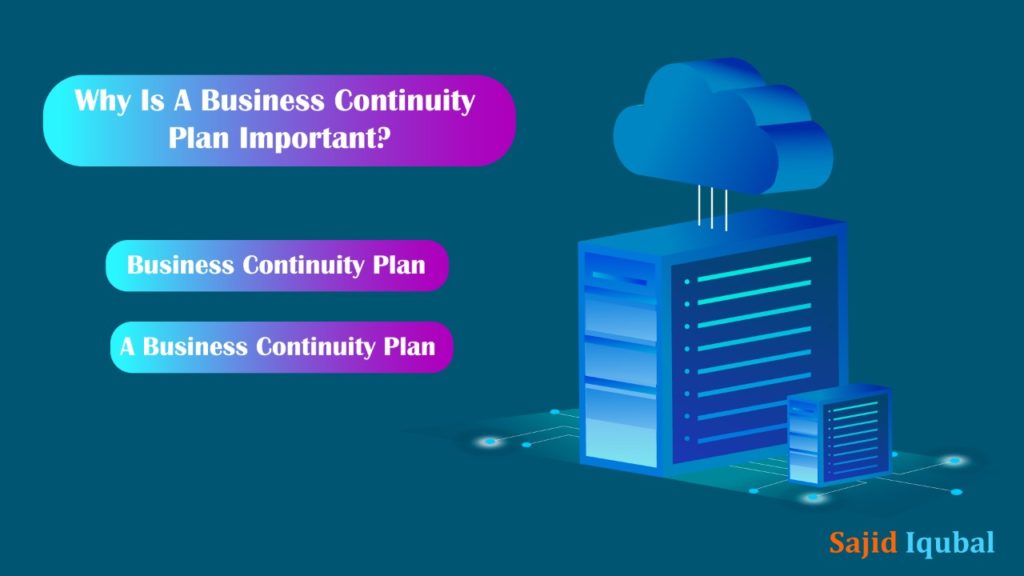The terms Disaster recovery (DR) versus business continuity (BC) are two completely different strategies, each of which is an important aspect in protecting business operations.
If we talk about protecting your data, it is important to understand the differences and plan. Differences arise both from use and application after the ravages attack.
Business Continuity Plan (BCP) is a document that contains the important information needed to keep an organization going during an unplanned event.
Disaster Recovery Plans include restoring critical support systems. Those systems are mostly hardware, communications, and IT assets. Disaster recovery aims to reduce the focus on normalizing technical operations and business downtime in the shortest time possible.
Why Is A Business Continuity Plan Important?
Business Continuity Plan is an active business process that lets a company understand potential threats and weaknesses to their organization in times of crisis. Creating a business continuity plan assures that company leaders can react efficiently and quickly to business interruptions.
A Business Continuity Plan allows a company to continue serving customers during a crisis and reduces the likelihood of customers going to competitors. A Business Continuity Plan minimizes business decline and outlines steps to be taken before and after an emergency, to maintain the company’s financial viability.
Why Is A Disaster Recovery Plan Important?

The importance of a DR plan cannot be understated. Regardless of the industry, when an unexpected event occurs and stops day-to-day operations, your organization needs to recover as quickly as possible and provide services to its customers. From data security breaches to natural disasters, you should have a plan in case of catastrophe. Not having a DR plan in place can put the organization at risk of loss of reputation, high financial costs, an even greater risk to its customers.
Why Business Continuity And Disaster Recovery Matter?

Business continuity actually dictates how the business will proceed during and after the disaster. It can provide contingency plans, outlining how the business will operate even if it has to move to an alternate location. Business continuity planning can also take into account small interruptions or minor disasters, such as extended power outages.
Disaster recovery refers to plans that are put in place to react to events such as a business disaster, fire, act of terror, natural disaster, or cybercrime. Disaster recovery includes measures that take a business to respond to an incident and return to safe, normal operation as quickly as possible.
How BC And DR Are Similar?
- Both are proactive strategies that help prepare the business for unexpected, catastrophic events. Instead of reacting to a disaster, both disciplinaries take a foregoing approach, trying to minimize the effects of a catastrophe before it occurs.
- Businesses can use both for a range of ecological and man-made disasters. BC and DR help prepare for natural disasters, epidemics, and even cyber-attacks
- Both require regular reviews, and often they may sometimes require modifications to match the company’s evolving goals. These plans will be regularly tested and updated by an emergency management leader as required.
How BC And DR Are Connected?
Disaster recovery focuses on the implementation of a plan that helps the company to take preventive measures during a disaster. This enables companies to protect themselves from situations that can harm businesses in various ways.
A disaster recovery plan serves as a safeguard and protects businesses from unforeseen circumstances. The purpose of a business continuity plan is to streamline the flow of operations or processes following any damage or disaster. It helps to execute a plan that does not affect business activities and operations and ensures smooth functioning within an organization.
What Are The Differences Between BC And DR?
- During a disaster, business continuity focuses on keeping the business running, while disaster recovery focuses on restoring data access and IT infrastructure after a disaster. In other words, the former is concerned with keeping the shop open even in unusual or unfavorable conditions, while the latter focuses on returning it as normally as possible.
- BC and DR can involve creating additional safety measures for employees, such as conducting fire drills or buying emergency supplies. Mixing the two allows the business to maintain an equal focus on maintaining operations and keeping employees safe.
- BC and DR have different goals. Effective business continuity plans limit operational downtime, whereas effective DR plans reduce inefficient or irregular device functions. By combining just two plans, businesses can prepare for widespread catastrophic events.
- BC strategy can ensure communication methods such as phones and network servers continue to operate amid the crisis. Meanwhile, a disaster recovery strategy helps to ensure an organization’s ability to return to full functionality after a disaster has occurred. To put it differently, business continuity focuses on keeping the lights on and opening the business to some capacity, whereas DR focuses on getting operations in general.
- Some businesses may incorporate DR strategies as part of their overall business continuity plans. Disaster recovery is a step in the comprehensive process of protecting a company against all contingencies.
Conclusion
Business continuity planning ensures continuity of operation with minimal service outlay or downtime. A business disaster recovery plan can restore data and critical applications when your system is destroyed. Balancing the two planning strategies is a matter of priorities. If most of your business transactions are online, then you need to make data security your number o